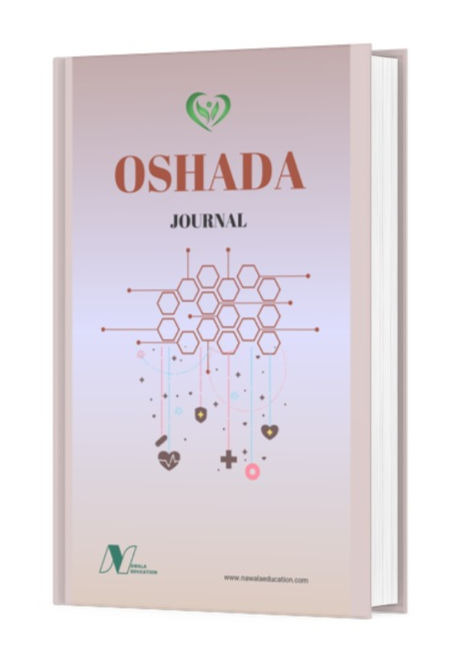Effectiveness of Sexuality education program in reducing the risk of teenage pregnancy
DOI:
https://doi.org/10.62872/d37yw033Keywords:
Sexuality education, teenage pregnancy, reproductive healthAbstract
This study aims to assess the effectiveness of sexuality education programs in reducing the risk of teenage pregnancy. Using a quantitative survey method, data were collected from 220 adolescent respondents to evaluate their knowledge, attitudes, and behaviors related to sexual health before and after participating in the program. The survey focused on key aspects such as knowledge of reproductive health, sexual behavior, and contraceptive use. Statistical analysis was conducted to determine if there were significant changes in participants' attitudes and behaviors following the intervention. The findings of this research are expected to provide valuable insights into the impact of sexuality education on teenage pregnancy rates and offer recommendations for improving the design and implementation of such programs.
Downloads
References
Achigibah, A. D., AmdjadFar, M., Krugu, J. K., Ruiter, R. A., & Mevissen, F. E. (2024). The end point of it is abstinence: a qualitative analysis of underlying factors influencing Christian leaders’ adoption and implementation of sex and sexuality education in Bolgatanga, Ghana. Culture, Health & Sexuality, 1-15.
Ahari, S. B., Moghadam, Z. B., Azin, S. A., Montazeri, A., Maasoumi, R., & Pedram, J. (2022). Evaluation of effectiveness of a sexuality education program for parents of male adolescents: promoting of parent–adolescent sexual communication. International Journal of Adolescent Medicine and Health, 34(4), 249-256.
Amy L. Bordogna, Amanda C. Coyle, Rupa Nallamothu, Alina L. Manko, R. Yen (2021). Comprehensive Sexuality Education to Reduce Pregnancy and STIs in Adolescents in the United States: A Systematic Review and Meta-Analysis. American Journal of Sexuality Education, 68(3), 476-489. https://doi.org/10.1080/15546128.2022.2080140
Angellina, S., Handayani, L., Pabidang, S., & Suryantara, B. (2024). Factors Affecting COVID-19 Vaccination In Pregnant Women at The Padang Tikar Health Center. Oshada, 1(3), 52-67.
Bordogna, A. L., Coyle, A. C., Nallamothu, R., Manko, A. L., & Yen, R. W. (2023). Comprehensive sexuality education to reduce pregnancy and STIs in adolescents in the United States: a systematic review and meta-analysis. American Journal of Sexuality Education, 18(1), 39-83.
Centers for Disease Control and Prevention (CDC). (2022). Teen Birth Rate. https://www.cdc.gov/nchs/fastats/teen-births.htm
Gajanayake, C., Withanage, S. J. W., Lakshima, W. D. S., & Karunanayake, A. (2024). Project to Reduce the Teenage Pregnancies Through Health Education at MOH Level.
Håkansson, M., Mamo, R. A., Parwani, H. B., Otieno, B., & Makenzius, M. (2024). Unmet needs for comprehensive sexuality education: a qualitative study among secondary school students in Western Kenya. American Journal of Sexuality Education, 19(1), 42-57.
Hawkins, S. S. (2024). Expansion of comprehensive sexuality education. Journal of Obstetric, Gynecologic & Neonatal Nursing, 53(1), 14-25.
Ivanova, O., Rai, M., Michielsen, K., & Dias, S. (2020). How sexuality education programs have been evaluated in low-and lower-middle-income countries? A systematic review. International Journal of Environmental Research and Public Health, 17(21), 8183.
Kemigisha, E., Bruce, K., Ivanova, O., Leye, E., Coene, G., Ruzaaza, G. N., & Michielsen, K. (2019). Evaluation of a school based comprehensive sexuality education program among very young adolescents in rural Uganda. BMC public health, 19, 1-11.
Lee, G. Y., & Lee, D. Y. (2019). Effects of a life skills-based sexuality education programme on the life-skills, sexuality knowledge, self-management skills for sexual health, and programme satisfaction of adolescents. Sex Education, 19(5), 519-533.
Lohan, M., Brennan-Wilson, A., Hunter, R., Gabrio, A., McDaid, L., Young, H., ... & White, J. (2022). Effects of gender-transformative relationships and sexuality education to reduce adolescent pregnancy (the JACK trial): a cluster-randomised trial. The Lancet Public Health, 7(7), e626-e637.
Maasoumi, R., Azin, S. A., Nedjat, S., Parto, M., Hajiabadi, A. Z., & Gelehkolaee, K. S. (2024). The effect of sexuality education based on the information, motivation, and behavioral skills model on improving the teachers’ professional competence. Heliyon, 10(2).
Myat, S. M., Pattanittum, P., Sothornwit, J., Ngamjarus, C., Rattanakanokchai, S., Show, K. L., ... & Lumbiganon, P. (2024). School-based comprehensive sexuality education for prevention of adolescent pregnancy: a scoping review. BMC Women's Health, 24(1), 137.
Rahmawati, I., & Murtaqib, M. (2024). Efforts to Deal with the Impact of Adolescent Pregnancy through a Holistic Approach: A Literature Review.
Romero, I., Campero, L., Estrada, F., Torres-Ibarra, L., Villalobos, A., Hubert, C., & Schiavon, R. (2024). Comprehensive sexuality education as a strategy to prevent teenage pregnancy in predominantly Indigenous communities of Chiapas, Mexico: context, scope and implementation feasibility. Sex Education, 1-17.
Tituaña, A., Herrán, K., Galárraga, O., & Palacios, I. (2024). How to decrease teenage pregnancy: rural perspectives in Ecuador. Frontiers in Public Health, 12, 1370507.
Triansyah, I., Amril, S. P., Heppy, F., Vani, A. T., Dewi, N. P., & Abdullah, D. (2024). Chances of Presbycusis in Minangkabau Elderly Patients with Type 2 Diabetes Mellitus Without Complications in Padang City. Oshada, 1(3), 18-29.
United Nations Population Fund (UNFPA). (2021). Adolescent Pregnancy. https://www.unfpa.org/adolescent-pregnancy
Downloads
Additional Files
Published
Issue
Section
License
Copyright (c) 2024 Anna Uswatun Qoyyimah, Yenni Kristiana , Tri Budi Rahayu, Novian Aldo (Author)

This work is licensed under a Creative Commons Attribution-ShareAlike 4.0 International License.

This work is licensed under a Creative Commons Attribution-ShareAlike 4.0 International License.











